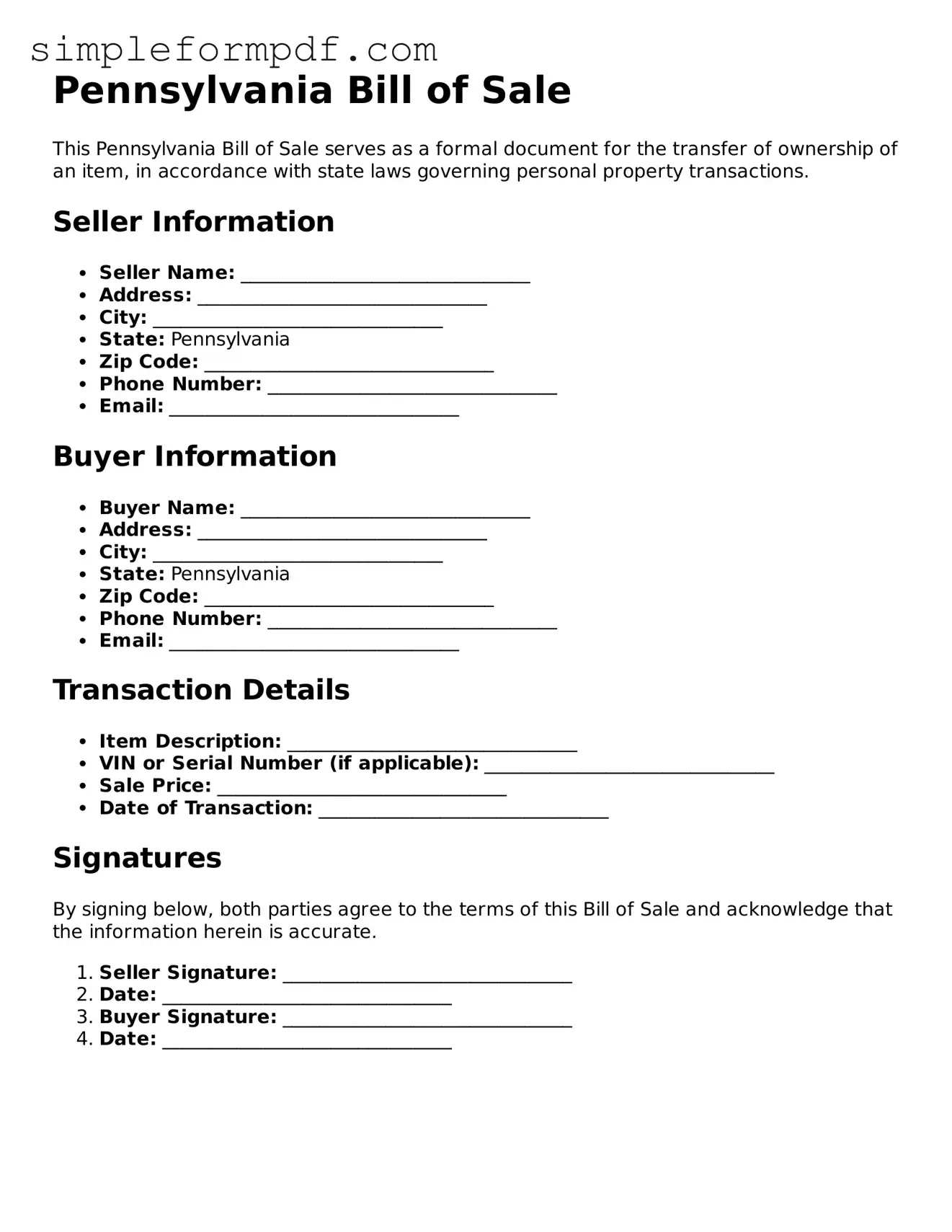Free Bill of Sale Form for the State of Pennsylvania
The Pennsylvania Bill of Sale form is a legal document that serves as proof of the transfer of ownership of personal property from one party to another. This form is essential for ensuring that both the buyer and seller have a clear record of the transaction, protecting their rights and interests. To begin the process of creating your Bill of Sale, please fill out the form by clicking the button below.
Launch Editor
